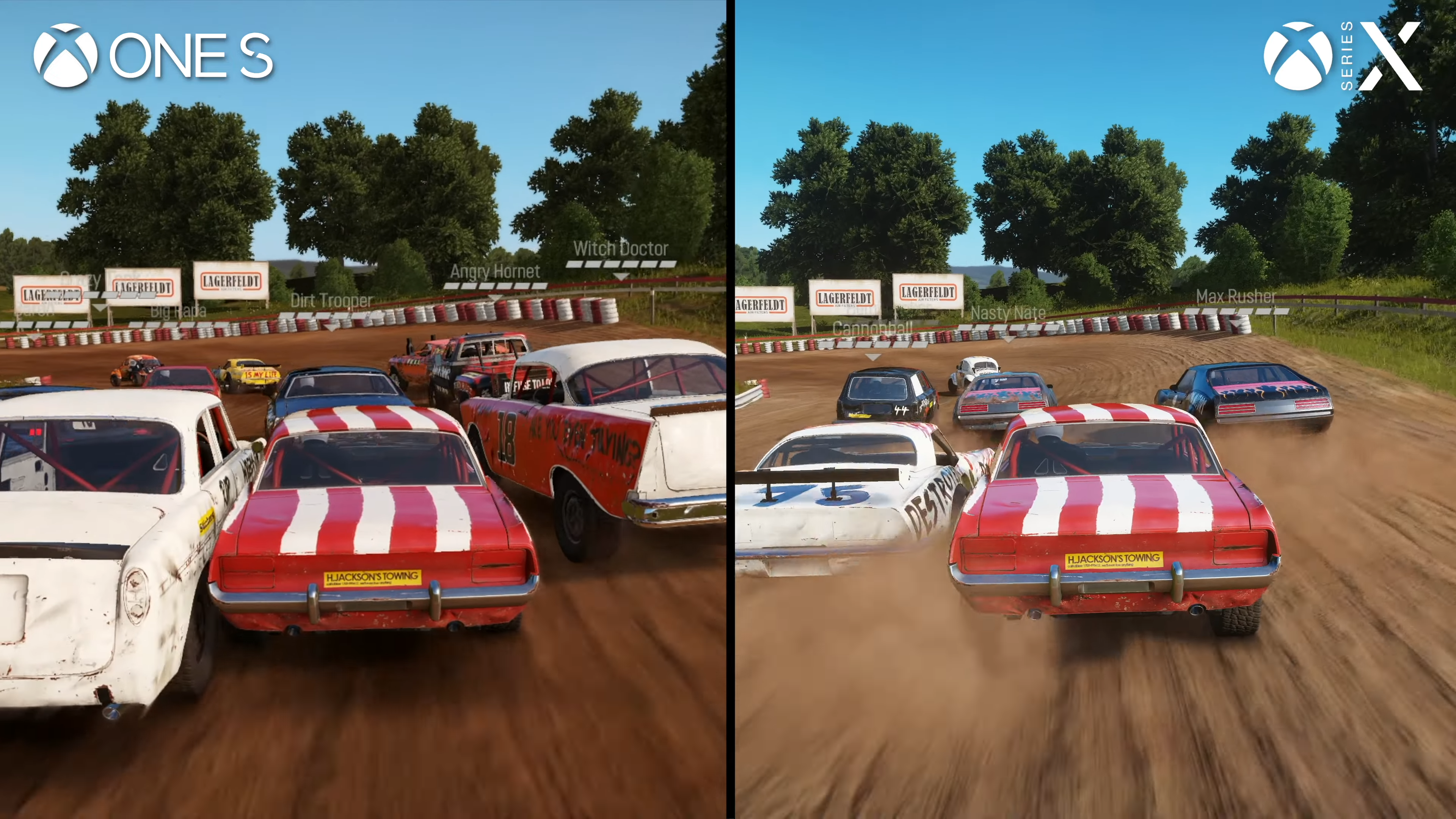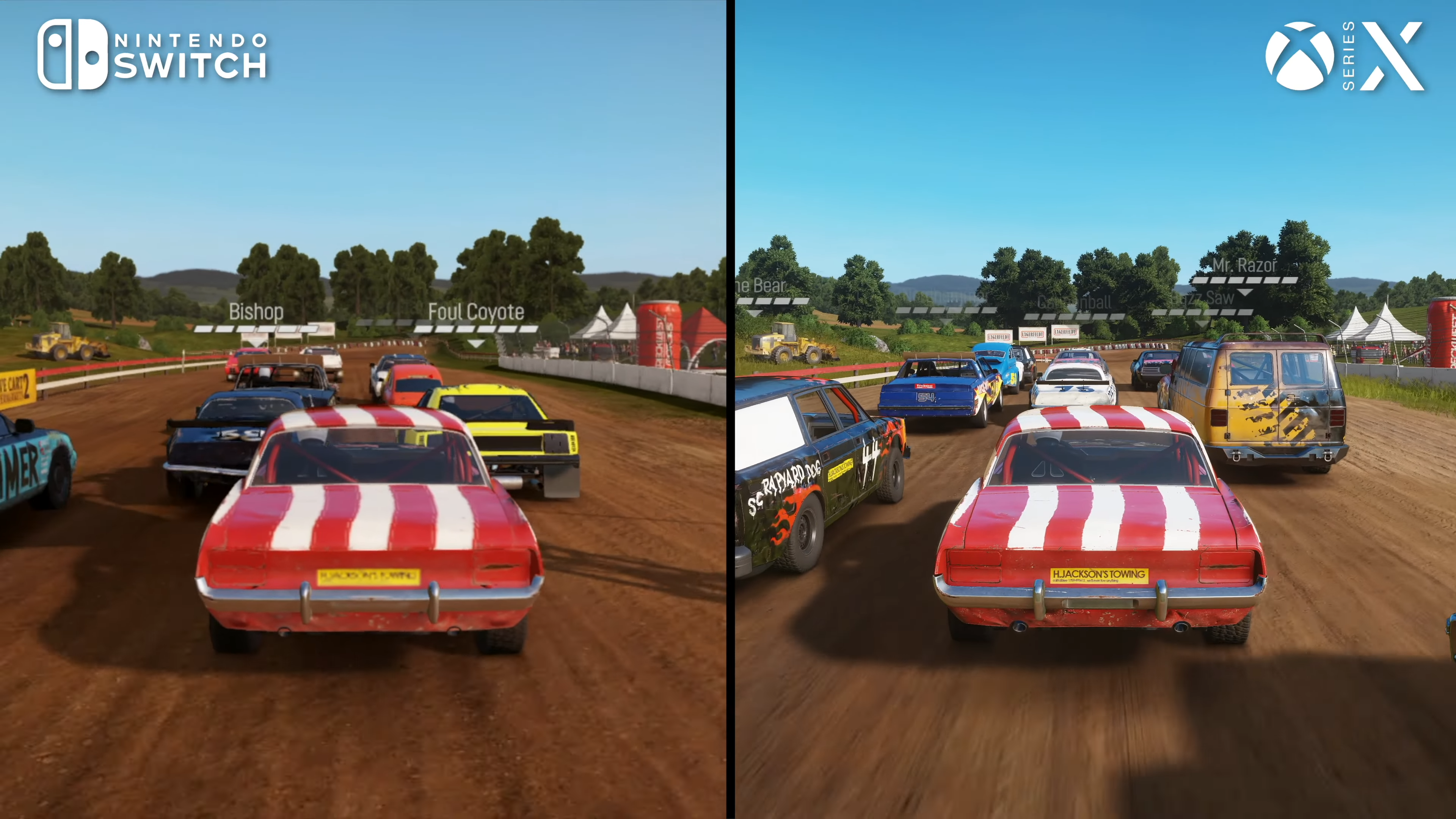Wreckfest’s claim to fame is its destruction. Vehicle damage is fully simulated here, with cars that realistically crumple and disintegrate as they collide. Crashes leave bits of fender and sheet metal strewn over the track, and often send pieces of concrete barriers or tire walls into the air as well. The damage system is backed by a solid handling model, with weighty-feeling vehicles that demand care when navigating corners - but some arcade characteristics that prevent mistakes from being too punishing. Technically speaking Wreckfest is a good-looking but not especially ambitious title, outside of its superb car damage model. Cars are highly detailed, there’s plenty of trackside geometry, and pop-in is minimal - but indirectly lit shots often look quite flat, car reflections are quite basic and anti-aliasing is absent. It’s a slightly unusual feature set, which is perhaps explained by its initial development in 2012 by a smaller team on a custom engine, but it turns into a winning formula for Switch: conservative rendering tech plus a custom, tweakable engine. In fact, at a glance, the Switch release looks similar to the last-gen console versions with all core rendering tech intact and a 1600x900 resolution that isn’t far from the 1920x1080 used on Xbox One. It’s only by looking more closely that the downgrades become visible - such as low quality textures and simpler foliage that don’t receive lighting or cast self-shadows. Some other trackside details are moderately simplified as well, like the crowds, while car geometry has been streamlined with boxier fenders, filled-in exhausts and smoothed-out seams. There seem to be some tweaks to post processing too, with motion blur entirely absent. Despite these cuts, Wreckfest holds up nicely and honestly the cuts here are pretty minimal relative to other recent Switch conversions we’ve seen - such as topically similar WRC 10. Performance is quite solid as well. Just like the last-gen releases, 30fps is the target frame-rate, and it’s mostly achieved. During gameplay, certain dense sections of track or lots of cars onscreen can sometimes cause brief performance drops, while replays are more troublesome and often hit 20fps for extended periods. It looks like Wreckfest is using double-buffered v-sync, so drops are very noticeable when they do occur. Thankfully though, frame-rates are surprisingly consistent overall. Portable play yields some surprises. Visual settings are essentially untouched, while resolution falls from 1600x900 to 960x540. Oddly though, this is upscaled to the Switch’s 720p screen using nearest neighbour filtering, which preserves edge clarity by unevenly scaling the image to align with the pixel grid of the output resolution - an approach we’ve seen in games like Astral Chain and AC Ezio Collection. Unfortunately, without a form of linear filtering the image looks blockier than it needs to be, drawing more attention to the game’s aliasing problems. The portable mode is generally good, and performance seems roughly in line with docked play, but I wish bilinear filtering had been used instead. Broadly speaking however, this is a skillful conversion. Wreckfest scales to the Switch with incremental compromises, not massive cutbacks, Wreckfest’s visual makeup is very much preserved, and the game looks attractive - so the Switch release is a success. Let’s move up the performance ladder then, and take a look at the last-gen console versions. The Xbox One release is representative of the last-gen console releases in terms of underlying visual settings. Texture quality, models and post-processing fall in line with the Xbox One version on the three other last-gen machines, with shadow draw-in for vehicles and grass pushed out on PS4 Pro and Xbox One X. PS4 and Xbox One run at 1080p without AA, as does the One X by default (and PS4 Pro set to a 1080p output resolution), but the pro consoles also have higher-res modes available. One X offers a simple 4K toggle, offering much-improved fidelty, although shimmer is still an issue. PS4 Pro insteads uses checkerboard rendering at 1800p when set to a 4K output, but it’s weirdly rife with issues - the image is covered in combing artefacts and jumps from frame to frame. Very few edges resolve to a clean 1800p and image reconstruction is basically non-functional; I much prefer the 1080p render here. Frame-rates are quite good on last-gen machines though, with One X, PS4 and PS4 Pro all delivering an essentially locked 30fps. Xbox One is the odd one out, dropping frames and tearing occasionally but largely hitting the 30fps target. After the release of the last-gen console versions in 2019, Wreckfest was fully upgraded for current-gen platforms in 2021 - and surprisingly, the most obvious tweak is to the colour grading. The game looks cooler overall - less sepia, more blue - with greater vibrance and contrast. I prefer the new look and thought it might be an indication of a technical upgrade, but on closer inspection it really does seem to be more of a stylistic shift that matches the PC release. Some incidental details are improved as well. Grass and bushes are rendered further afield with enhanced density, alpha effects have more volume and dirt effects feature geometric dirt particles, a nice touch. Bloom lighting is present too, which is most obvious against the horizon on bright tracks, while screen space light shafts poke through the trees when the sun is low. Finally, shadow draw distance is pushed out considerably, which helps ground distant vehicles. PS5 and Series X push a full 4K resolution in addition to these boosts, while Series S sticks to 1080p - but, just like last-gen, there’s no AA so artefacts remain prominent. Thankfully, frame-rates are doubled to 60fps, and performance is great - PS5 in particular was locked to 60fps even in scenes that caused dips on other platforms. Series S did drop frames more regularly, though mostly in replays, and Series X is currently the worst of the bunch with repeatable frame-rate dips and tearing in busy moments. Replays suffer as well, with extended bouts in the 50-60fps range. This isn’t a disaster - 60fps is on the cards the vast majority of the time during gameplay, but these moments do stick out a few times per race. So the current-gen console code for Wreckfest delivers a key boost - 60fps gameplay - plus incremental but appreciated settings tweaks to bump visual quality. Performance drops are a concern on Microsoft’s consoles however, and perhaps Series X should be cut down somewhat given the performance wobbles. So with our analysis complete, Wreckfest is well worth playing on any system but the Switch port really shines - it’s a full-fat conversion of the last-gen console version with few meaningful downgrades. None of the rendering fundamentals have been lost in translation, and the nips and tucks required to run the game on portable hardware are hard to notice at a glance. It’s a breath of fresh air given the compromises in other recent Switch conversions. Side-by-side with current-gen consoles there is a solid degree of scalability in the game too. While the visual boosts are less fundamental and more incremental, Wreckfest does get a nice boost on the new machines, while last-gen consoles remain capable. The only issue worth highlighting is the bizarre checkboard implementation on PS4 Pro, which could benefit from some additional attention. More important than the technical minutiae of course is the fact that Wreckfest is a very good racing game - and is the only credible demolition derby-style racer in recent memory. This is a worthy successor to games like Flatout and Test Drive: Eve of Destruction. Cars handle well, races are dynamic and most importantly, the destruction is extremely well-realised. Few other modern games can deliver the same catastrophic thrills.
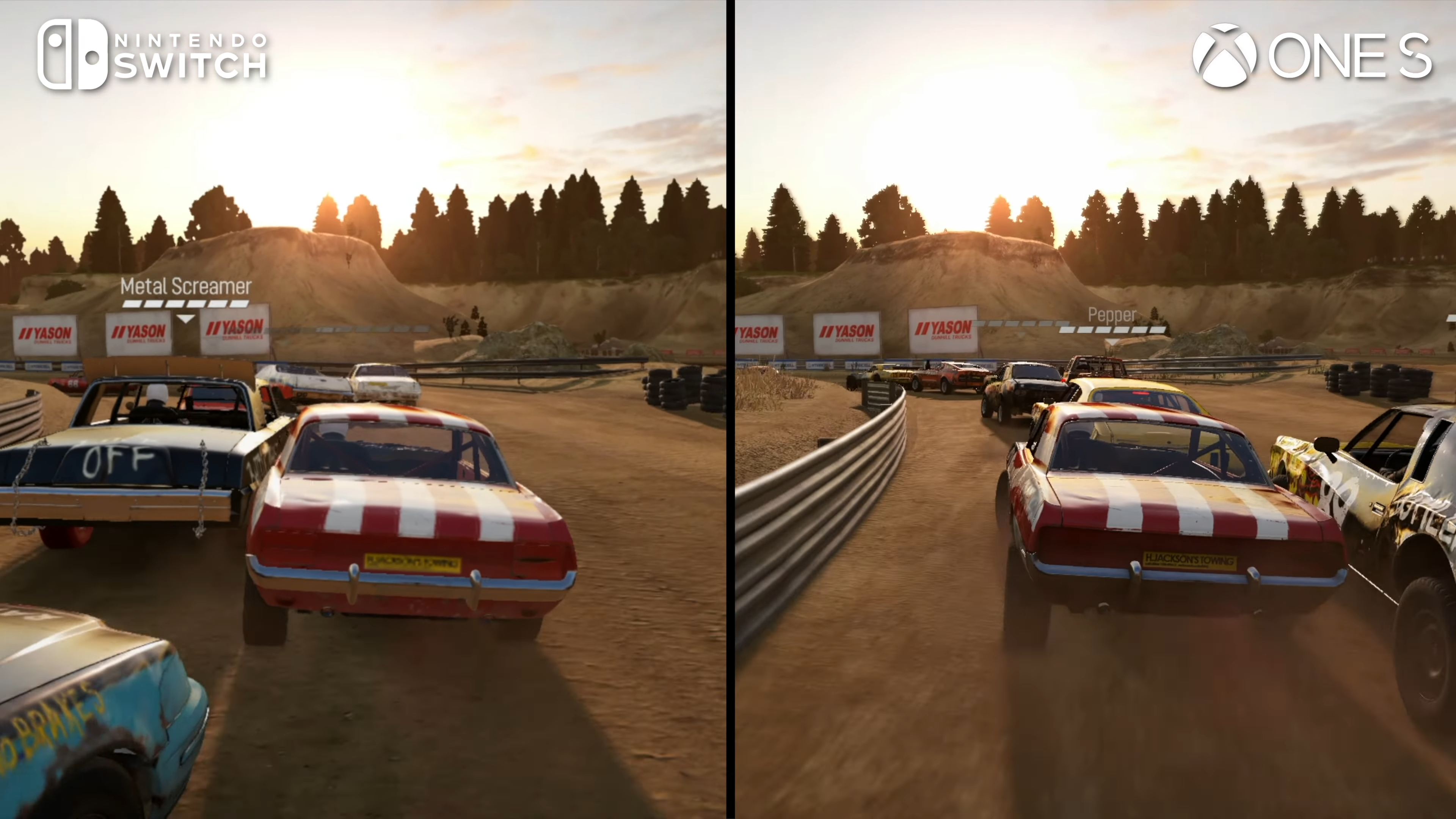
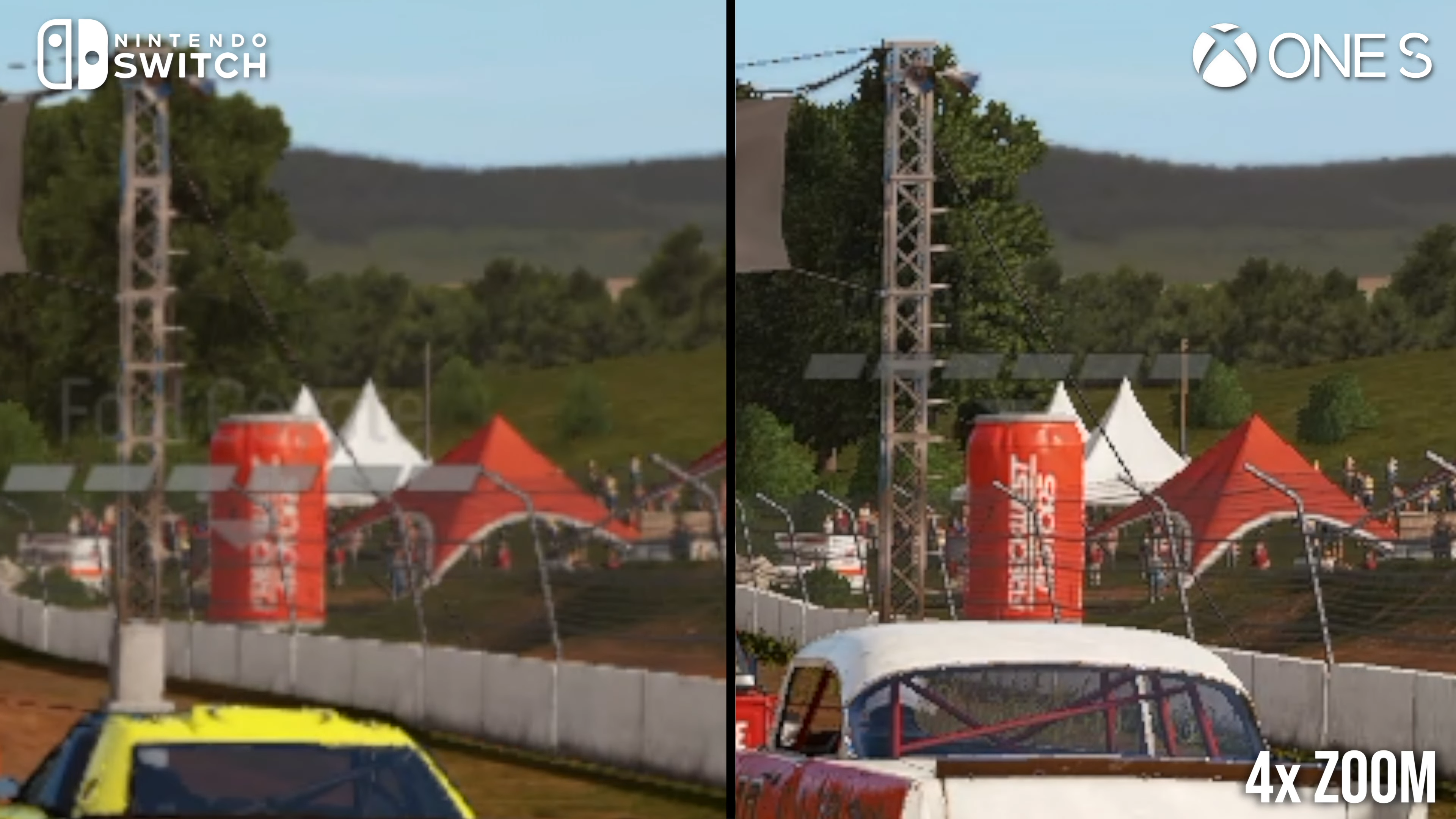
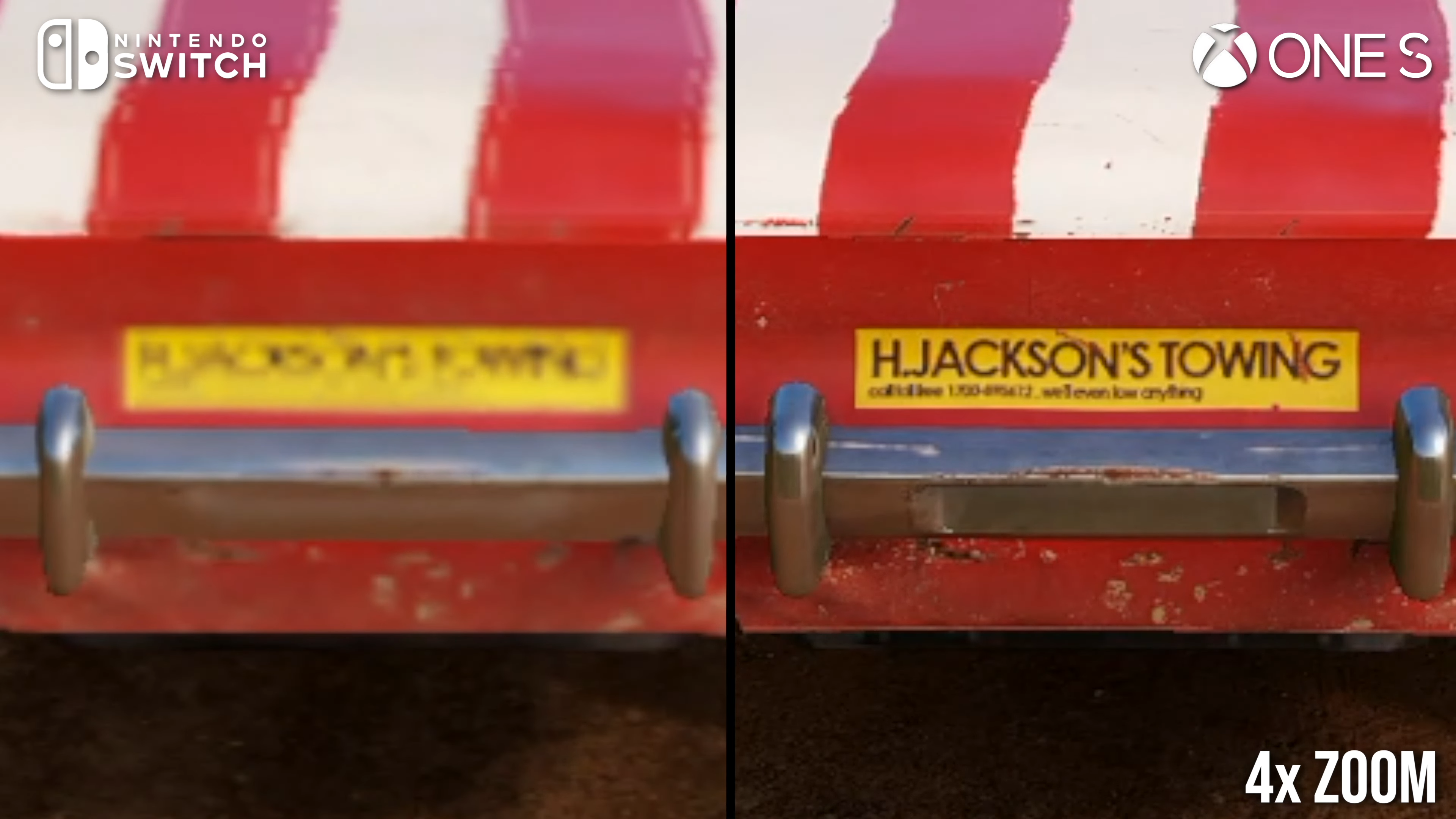

![]()
